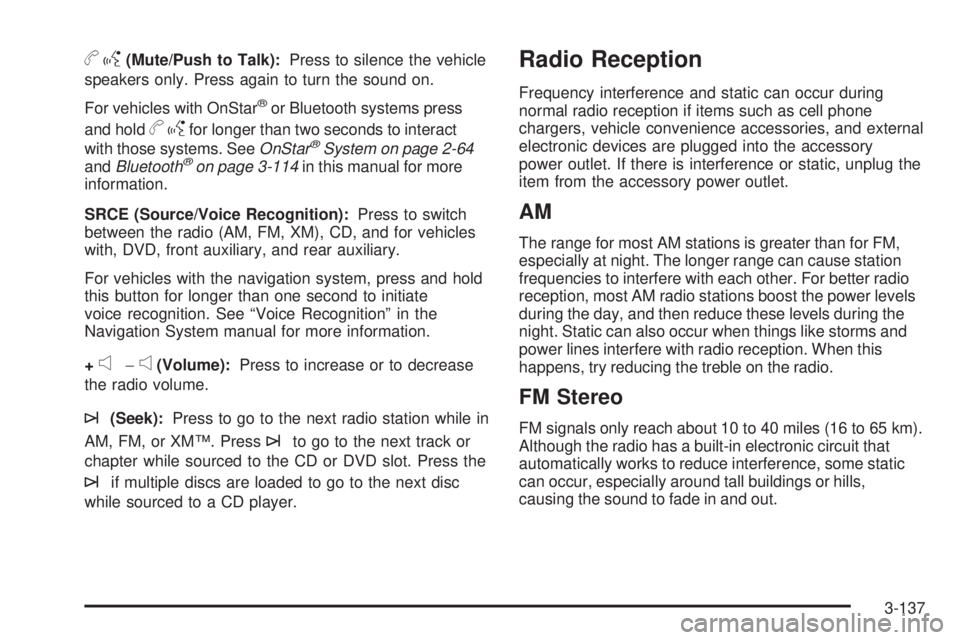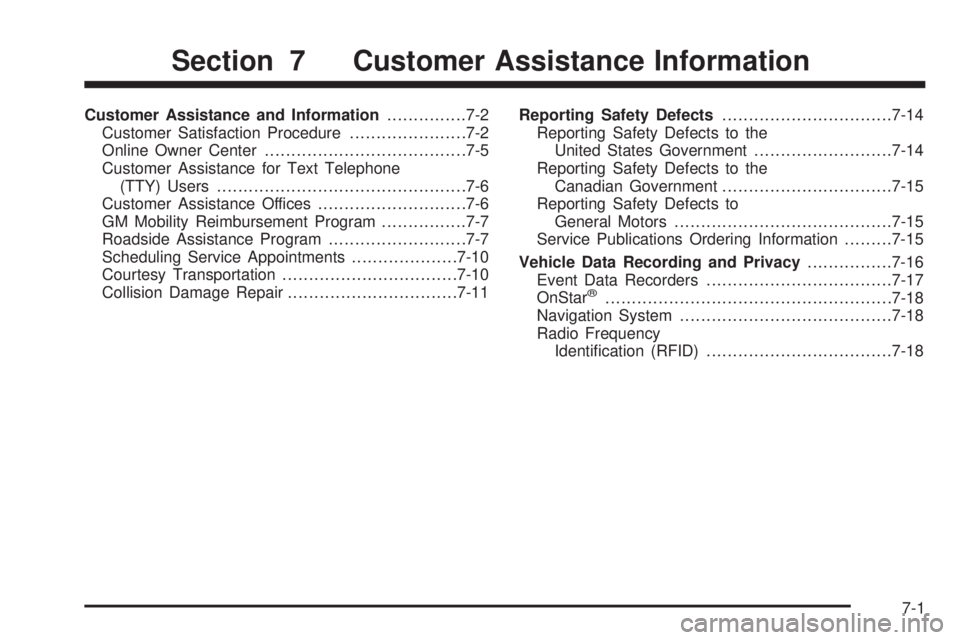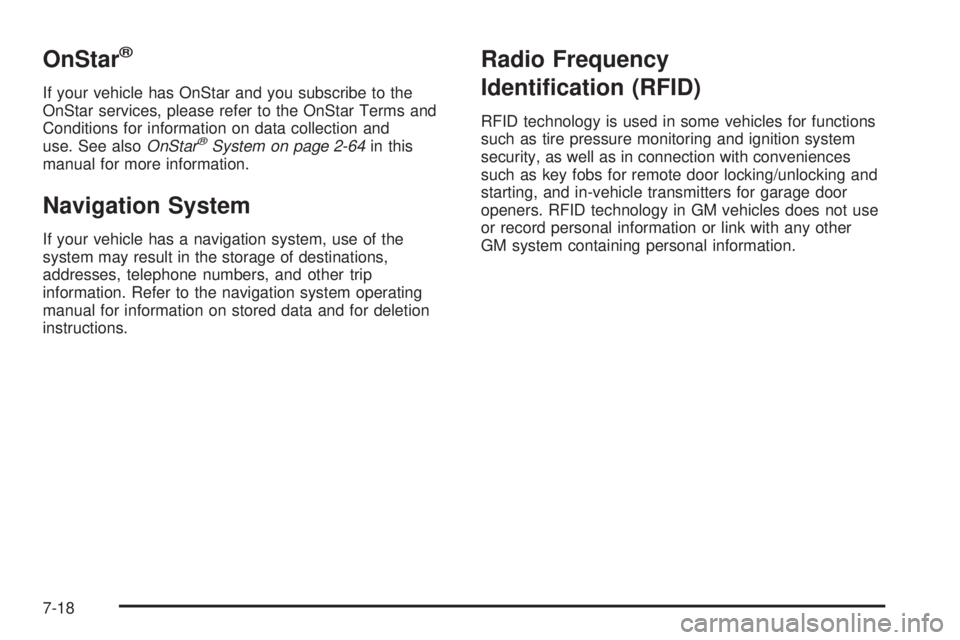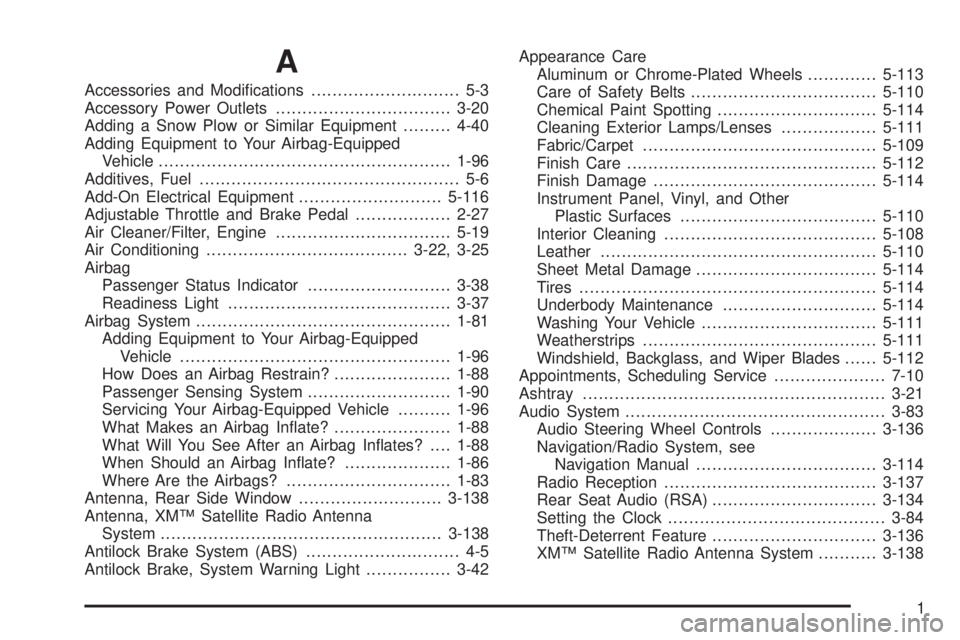navigation system GMC YUKON 2009 User Guide
[x] Cancel search | Manufacturer: GMC, Model Year: 2009, Model line: YUKON, Model: GMC YUKON 2009Pages: 576, PDF Size: 3.06 MB
Page 323 of 576

bg(Mute/Push to Talk):Press to silence the vehicle
speakers only. Press again to turn the sound on.
For vehicles with OnStar
®or Bluetooth systems press
and hold
bgfor longer than two seconds to interact
with those systems. SeeOnStar®System on page 2-64
andBluetooth®on page 3-114in this manual for more
information.
SRCE (Source/Voice Recognition):Press to switch
between the radio (AM, FM, XM), CD, and for vehicles
with, DVD, front auxiliary, and rear auxiliary.
For vehicles with the navigation system, press and hold
this button for longer than one second to initiate
voice recognition. See “Voice Recognition” in the
Navigation System manual for more information.
+
e−e(Volume):Press to increase or to decrease
the radio volume.
¨(Seek):Press to go to the next radio station while in
AM, FM, or XM™. Press
¨to go to the next track or
chapter while sourced to the CD or DVD slot. Press the
¨if multiple discs are loaded to go to the next disc
while sourced to a CD player.
Radio Reception
Frequency interference and static can occur during
normal radio reception if items such as cell phone
chargers, vehicle convenience accessories, and external
electronic devices are plugged into the accessory
power outlet. If there is interference or static, unplug the
item from the accessory power outlet.
AM
The range for most AM stations is greater than for FM,
especially at night. The longer range can cause station
frequencies to interfere with each other. For better radio
reception, most AM radio stations boost the power levels
during the day, and then reduce these levels during the
night. Static can also occur when things like storms and
power lines interfere with radio reception. When this
happens, try reducing the treble on the radio.
FM Stereo
FM signals only reach about 10 to 40 miles (16 to 65 km).
Although the radio has a built-in electronic circuit that
automatically works to reduce interference, some static
can occur, especially around tall buildings or hills,
causing the sound to fade in and out.
3-137
Page 545 of 576

Customer Assistance and Information...............7-2
Customer Satisfaction Procedure......................7-2
Online Owner Center......................................7-5
Customer Assistance for Text Telephone
(TTY) Users...............................................7-6
Customer Assistance Offices............................7-6
GM Mobility Reimbursement Program................7-7
Roadside Assistance Program..........................7-7
Scheduling Service Appointments....................7-10
Courtesy Transportation.................................7-10
Collision Damage Repair................................7-11Reporting Safety Defects................................7-14
Reporting Safety Defects to the
United States Government..........................7-14
Reporting Safety Defects to the
Canadian Government................................7-15
Reporting Safety Defects to
General Motors.........................................7-15
Service Publications Ordering Information.........7-15
Vehicle Data Recording and Privacy................7-16
Event Data Recorders...................................7-17
OnStar
®......................................................7-18
Navigation System........................................7-18
Radio Frequency
Identi�cation (RFID)...................................7-18
Section 7 Customer Assistance Information
7-1
Page 562 of 576

OnStar®
If your vehicle has OnStar and you subscribe to the
OnStar services, please refer to the OnStar Terms and
Conditions for information on data collection and
use. See alsoOnStar
®System on page 2-64in this
manual for more information.
Navigation System
If your vehicle has a navigation system, use of the
system may result in the storage of destinations,
addresses, telephone numbers, and other trip
information. Refer to the navigation system operating
manual for information on stored data and for deletion
instructions.
Radio Frequency
Identi�cation (RFID)
RFID technology is used in some vehicles for functions
such as tire pressure monitoring and ignition system
security, as well as in connection with conveniences
such as key fobs for remote door locking/unlocking and
starting, and in-vehicle transmitters for garage door
openers. RFID technology in GM vehicles does not use
or record personal information or link with any other
GM system containing personal information.
7-18
Page 563 of 576

A
Accessories and Modi�cations............................ 5-3
Accessory Power Outlets.................................3-20
Adding a Snow Plow or Similar Equipment.........4-40
Adding Equipment to Your Airbag-Equipped
Vehicle.......................................................1-96
Additives, Fuel................................................. 5-6
Add-On Electrical Equipment...........................5-116
Adjustable Throttle and Brake Pedal..................2-27
Air Cleaner/Filter, Engine.................................5-19
Air Conditioning......................................3-22, 3-25
Airbag
Passenger Status Indicator...........................3-38
Readiness Light..........................................3-37
Airbag System................................................1-81
Adding Equipment to Your Airbag-Equipped
Vehicle...................................................1-96
How Does an Airbag Restrain?......................1-88
Passenger Sensing System...........................1-90
Servicing Your Airbag-Equipped Vehicle..........1-96
What Makes an Airbag In�ate?......................1-88
What Will You See After an Airbag In�ates?....1-88
When Should an Airbag In�ate?....................1-86
Where Are the Airbags?...............................1-83
Antenna, Rear Side Window...........................3-138
Antenna, XM™ Satellite Radio Antenna
System.....................................................3-138
Antilock Brake System (ABS)............................. 4-5
Antilock Brake, System Warning Light................3-42Appearance Care
Aluminum or Chrome-Plated Wheels.............5-113
Care of Safety Belts...................................5-110
Chemical Paint Spotting..............................5-114
Cleaning Exterior Lamps/Lenses..................5-111
Fabric/Carpet............................................5-109
Finish Care...............................................5-112
Finish Damage..........................................5-114
Instrument Panel, Vinyl, and Other
Plastic Surfaces.....................................5-110
Interior Cleaning........................................
5-108
Leather....................................................5-110
Sheet Metal Damage..................................5-114
Tires........................................................5-114
Underbody Maintenance.............................5-114
Washing Your Vehicle.................................5-111
Weatherstrips............................................5-111
Windshield, Backglass, and Wiper Blades......5-112
Appointments, Scheduling Service.....................7-10
Ashtray.........................................................3-21
Audio System.................................................3-83
Audio Steering Wheel Controls....................3-136
Navigation/Radio System, see
Navigation Manual..................................3-114
Radio Reception........................................3-137
Rear Seat Audio (RSA)...............................3-134
Setting the Clock.........................................3-84
Theft-Deterrent Feature...............................3-136
XM™ Satellite Radio Antenna System...........3-138
1
Page 571 of 576

N
Navigation System, Privacy..............................7-18
Navigation/Radio System, see Navigation
Manual.....................................................3-114
New Vehicle Break-In......................................2-24
O
Odometer......................................................3-36
Odometer, Trip...............................................3-36
Off-Road Driving.............................................4-12
Off-Road Recovery..........................................4-11
Oil
Engine.......................................................5-15
Pressure Gage............................................3-46
Pressure Light.............................................3-48
Oil, Engine Oil Life System..............................5-18
Older Children, Restraints................................1-54
Online Owner Center........................................ 7-5
OnStar, Privacy..............................................7-18
OnStar
®System, see OnStar®Manual...............2-64
Operation, Universal Home Remote System........2-68
Outlet Adjustment............................................3-31
Outlets
Accessory Power.........................................3-20
Outside
Automatic Dimming Mirror.............................2-51
Convex Mirror.............................................2-52
Heated Mirrors............................................2-52Outside (cont.)
Manual Mirrors............................................2-49
Power Foldaway Mirrors...............................2-50
Power Mirrors.............................................2-50
Towing Mirrors............................................2-49
Overheated Engine Protection
Operating Mode..........................................5-37
Owner Checks and Services.............................6-10
Owners, Canadian.............................................. iii
P
Paint, Damage..............................................5-114
Park
Shifting Into................................................2-44
Shifting Out of............................................2-45
Park Aid................................................2-53, 2-59
Park Brake....................................................2-42
Park Tilt Mirrors..............................................2-51
Parking
Assist........................................................2-53
Over Things That Burn.................................2-46
Passenger Airbag Status Indicator.....................3-38
Passenger Sensing System..............................1-90
Passing.........................................................4-11
PASS-Key
®III+ Electronic Immobilizer...............2-22
PASS-Key®III+ Electronic Immobilizer
Operation...................................................2-23
9
Page 572 of 576

Perchlorate Materials Requirements,
California..................................................... 5-4
Phone
Bluetooth
®................................................3-114
Power
Door Locks.................................................2-10
Electrical System.......................................5-116
Liftgate......................................................2-14
Lumbar Controls........................................... 1-6
Retained Accessory.....................................2-26
Seat ............................................................ 1-5
Steering Fluid.............................................5-38
Windows....................................................2-19
Power Assist Steps.........................................2-17
Privacy..........................................................7-16
Event Data Recorders..................................7-17
Navigation System.......................................7-18
OnStar .......................................................7-18
Radio Frequency Identi�cation.......................7-18
Programmable Automatic Door Locks.................2-11
R
Radio Frequency Identi�cation (RFID), Privacy......7-18
Radio(s)........................................................3-86
Radios
Navigation/Radio System, see Navigation
Manual.................................................3-114
Rear Seat Audio........................................3-134Radios (cont.)
Reception.................................................3-137
Setting the Clock.........................................3-84
Theft-Deterrent..........................................3-136
Rainsense™ II Wipers....................................... 3-9
Reading Lamps..............................................3-19
Rear Air Conditioning and Heating System.........3-31
Rear Air Conditioning and Heating System
and Electronic Climate Controls.....................3-33
Rear Axle......................................................5-50
Locking........................................................ 4-9
Rear Door Security Locks................................2-11
Rear Heated Seats.........................................1-13
Rear Seat Armrest..........................................2-76
Rear Seat Audio (RSA)..................................3-134
Rear Seat Entertainment System.....................3-125
Rear Side Window Antenna............................3-138
Rear Storage Area..........................................2-76
Rear Vision Camera........................................2-59
Rear Windshield Washer/Wiper.........................3-11
Rearview Mirror, Automatic Dimming..................2-48
Rearview Mirrors.............................................2-48
Reclining Seatbacks........................................1-10
Recommended Fluids and Lubricants.................6-13
Recovery Hooks.............................................4-32
Recreational Vehicle Towing.............................4-44
Remote Keyless Entry (RKE) System.................. 2-4
Remote Keyless Entry (RKE) System,
Operation..................................................... 2-5
Remote Vehicle Start........................................ 2-7
10